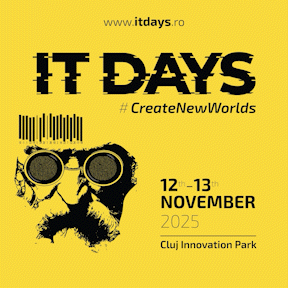PROGRAMMING
A crash intro into the world of Ethereum Blockchain, DeFi and Web3 Dapps
Our story begins in the seventeen century with Netherlands, the most advanced country of Europe at the time. Because of the adoption of Reformation in the preceding century (specifically the Calvinist ideology) and the proximity of the Atlantic Ocean, the Dutch people went through unprecedented developments. They were at the forefront of the geographical discoveries and fared brilliantly against Spain, the most powerful state at the moment, winning their formal independence from them after a struggle that lasted 80 years. But their most important discoveries with lasting impact even today were in the economic realm. They implemented the first modern stock-exchange and discovered first that a company could be split in tiny tranches called shares (societate pe actiuni in Romanian) which could be traded freely by all people, who thus became owners and sellers of small parts of a company. That company was the first mega-corporation, the Dutch East India Company.
PROGRAMMING
A Crash Course in Solidity, the lingua franca of Ethereum Smart Contracts

In this article we’ll present the fundamentals of Solidity, the language of choice for developing Smart Contracts on Ethereum or Ethereum cloned blockchains.
The theory and examples presented in this article are inspired primarily from two books. The first one, “Mastering Ethereum”, is written by two British computer scientists: Andreas M. Antonopoulos, a very known popularizer of Bitcoin and Gavin Wood, the creator of Solidity itself. The second book “Building Ethereum Dapps” written by Roberto Infante at Manning is my personal favorite: it is easy to understand but also tackles very complex aspects of Solidity and of the Ethereum ecosystem.
MANAGEMENT
About the IT Recruitment process
The main focus in the IT recruitment process goes towards finding the people with the best technological (and abstract reasoning) skills. Rightfully so, these technical capabilities are THE necessary prerequisite for any good employment in our industry.
At the same time, the big employers are also oriented, in their hiring strategy, towards searching and matching the best "characters" to a particular advertised position. This is understandable as the big companies are more stable than the start-ups, so the large organizations will invariably put more emphasis on long-time stability than on short-term outstanding results. That's why the corporate hiring staff usually has two main approaches.
PROGRAMMING
Introduction in .Net Multithreading Programming (II)
In the previous article we laid out the foundation of what multithreading is and described the pillar of asynchronous programming in .Net, namely the IAsyncResult interface. We also provided a brief history of the evolution of the .Net multithreading abstractization, starting with the Thread class and ending with the async-await pattern (and keywords).
In this article we will elaborate on the topic, giving detailed .Net thread synchronization examples, focusing on the two modes the CPU is spending time, in any modern operating system: the user-mode and the kernel-mode. As usual, we start with the definitions.
PROGRAMMING
A Short Introduction to .Net Multithreading Programming (I)

Today we will focus on the “difficult” subject of multi-threading in a big enterprise environment. Because my previous experience was anchored in the .Net Framework, we chose to provide the examples from the C\# language, but the very same concepts, classes and abstractions described below have an almost word-to-word equivalence in Java.
Conference TSM

VIDEO: ISSUE 109 LAUNCH EVENT
VIDEO: ISSUE 109 LAUNCH EVENT
Design contribution

























